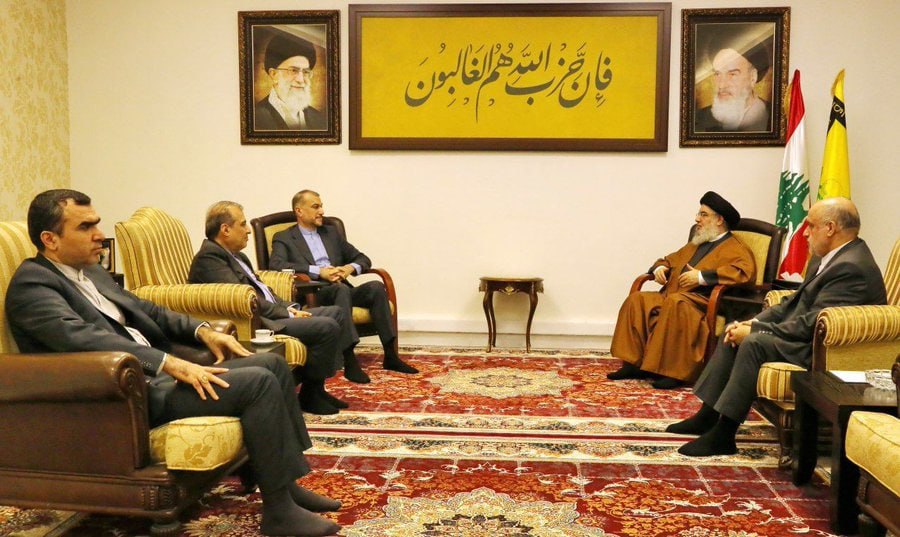Key insights:
- The number of Hezbollah claims of responsibility over the last week has not exceeded the average thus far. The breadth of Hezbollah’s activity has not expanded, and there has been no substantial change in the nature of Hezbollah’s strikes or the types of weapons utilized compared to the previous four months.
- Hezbollah’s activity must be examined within the equation of its reaction to the Israeli reaction. Hezbollah’s retaliation is directly linked to the nature of the targeted attacks. This is true for both the Lebanese and Syrian arenas. (In simple words, how painful the attack was to Hezbollah). In our assessment, the scope of the IDF attacks against Hezbollah so far still does not constitute a serious blow to Hezbollah’s operational capabilities.
- As negotiations for any agreement progress and reports of such an agreement increase, we believe Hezbollah will be more motivated to seek a victorious image.
- Along with Hezbollah, the Amal movement is a complete and dominant player in this conflict. Its combatants mostly target Israeli land with rockets and anti-tank missiles.
- Statements by senior Hezbollah figures hint in the direction of an “agreement,” apparently preparing the groundwork and, of course, preparing their permanent allegation, that will be declared predictably at the end of the war that the “resistance has won”:
Sheikh al-Daamoush, deputy head of the Executive Council (February 10): “Due to the steadfastness and heroism of the resistance in Gaza and Lebanon, the Israeli enemy has not been able to achieve its goals, it is not able to retreat out of the dead end it found itself in and has reached a dead end in its aggression, and has no choice but to halt the aggression and meet the conditions of the resistance. The only option to stop the Lebanese front is to stop the aggression in Gaza… Whoever wants to help Israel escape its difficult situation and flee escalation must pressure the enemy to stop its aggression before pressuring Lebanon or before debating about anything else.”
Ibrahim Amin al-Sayyid, head of the Political Council (February 11), said: “It is possible that we have moved or will soon move from a military war to a political war, and our brothers in Palestine shall emerge with a military and political victory. We must prepare for a new world based on defeating the Zionists… We are in a new world based on the fact that Israel cannot remain in our region, and only the Islamic resistance everywhere will survive.”
The Lebanese arena:
War data:
In Israel, the government evacuated 43 communities located up to five kilometers from the border with Lebanon. A total of about 61,000 citizens. Another 20,000 people who made their own independent decision to evacuate joined them.
It should be noted that some of the Israeli communities have not been fully evacuated, and there is still a civilian presence there. Hezbollah has killed five Israeli civilians so far. Unlike the IDF, which targets buildings and infrastructure used by Hezbollah in the heart of the villages (human shields), Hezbollah deliberately targets civilian structures inside Israeli communities.
During the past week, Hezbollah claimed responsibility for 50 rocket attacks into Israeli territory, including Falk and Burkan rockets, anti-tank missiles, and mortars. Hezbollah also fired two heavy rocket salvos that included dozens of rockets, each toward Safed (February 8) and toward the Golan Heights (February 9).
During the past week, it seems that Hezbollah has increased its shelling attacks toward civilian targets. Thirteen times anti-tank missiles and mortars were launched toward civilian targets in Kiryat Shmona, Manara, Malkiya, Dovev, Metula, Beit Hillel, Yiftach, and Bar’am.
Seven Hezbollah agents and five Amal operatives were killed during the last week, according to reports. As of October 8, 2023, a total of 188 Hezbollah operatives have been killed. Most of the operatives killed live in the area south of the Litani River (115 dead operatives who constitute 61 percent of all operatives killed). Many Hezbollah operatives and their families live in southern Lebanon near the border with Israel. They operate in southern Lebanon as part of Hezbollah’s geographic units and designated units, while assimilating into the civilian population (human shield tactics).
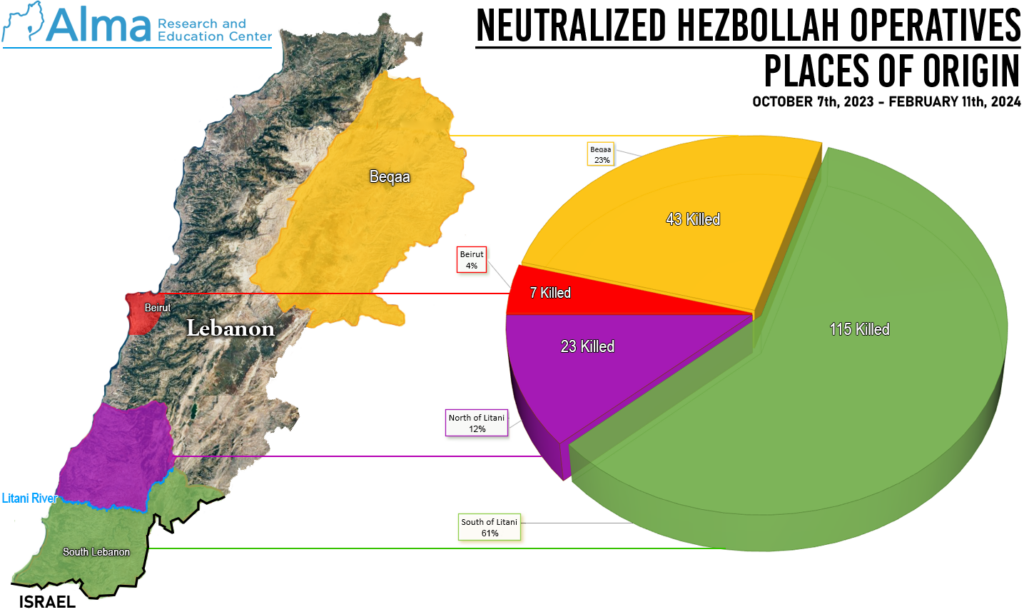
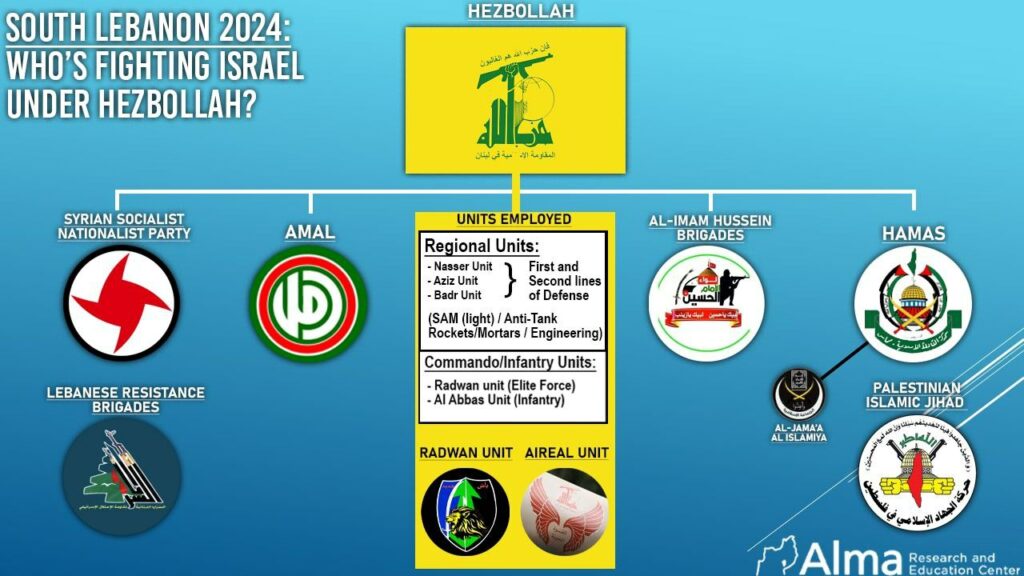
Prominent airstrikes in Lebanon:
In the afternoon of February 8, an airstrike was carried out in the city of Nabatiyeh, in the Kafr Raman neighborhood, near the monument to Hassan Kamel Al-Sabah. According to local reports, a black Hyundai carrying a senior Hezbollah operative named Abbas Muhammad al-Dabs, codenamed “Haj Abdullah,” was attacked. Al-Dabas, originally from the village of Blat in Nabatiyeh Province, was about 45 years old (born in January 1979). He was accompanied by another (apparently junior) operative named Wassam Fasa’i. According to reports, al-Dabas may have been connected to Hezbollah’s air defense array. Other reports put him in command of the area. Also, on February 8, Hezbollah fired an anti-tank missile from the Al-Hayam area at the Kiryat Shmona area, causing injuries. There was no confirmation that Al Debs was indeed in the vehicle and that he had been killed. As of this writing, Hezbollah has not issued an official announcement on the matter.
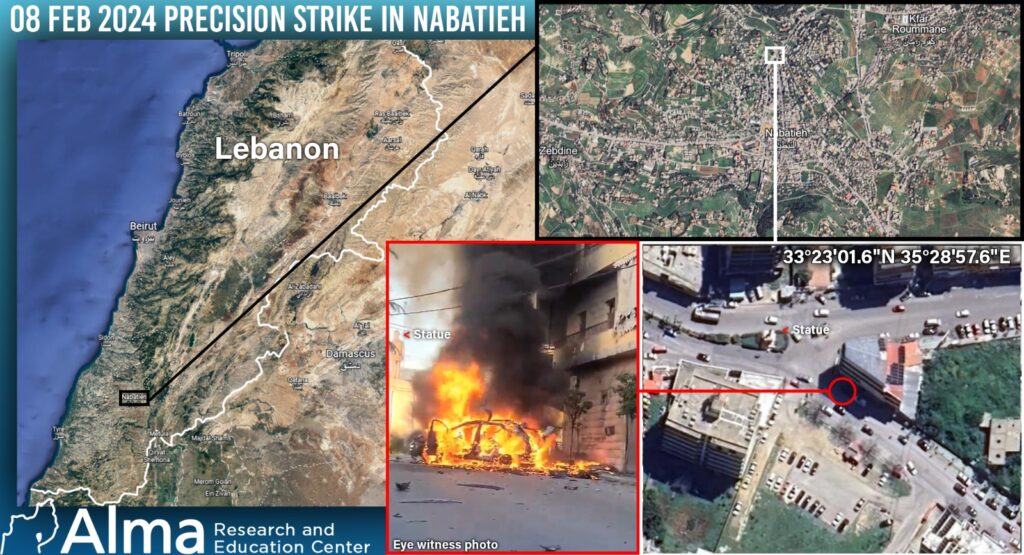
(February 10) In the afternoon, an airstrike was carried out in the area of the town of Jadra, north of Sidon, about 60 kilometers north of the border with Israel. According to several reports, the target of the attack was apparently Basel Saleh. Saleh is an operative in the Hamas-Lebanon “Construction Bureau” and was responsible for recruiting and operating terrorist networks in Judea and Samaria. Saleh was apparently only wounded and not killed in the attack. At this stage, his condition is unknown. The Bureau of Construction is responsible for building and developing Hamas’ military capabilities. The Construction Bureau includes about 10 departments. We assume that Saleh belonged to the Military Intelligence Department, which is responsible for gathering intelligence and creating an operative infrastructure for operations against Israeli targets. Two other central departments in the Bureau of Construction are the Production Department (Development and Production of Weapons) and the Training and Instruction Department.
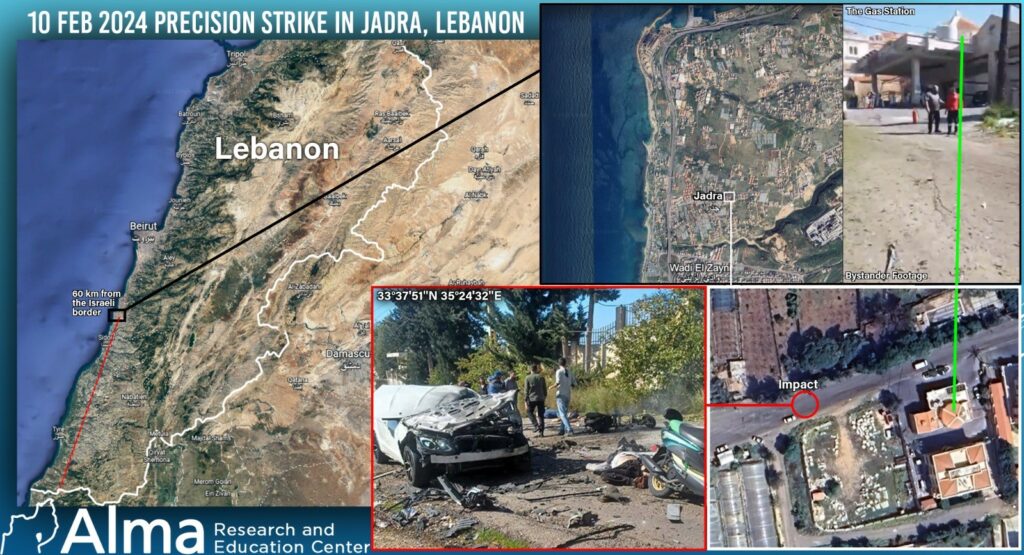
Hezbollah – General:
(February 05) Supporting the communities in the Sidon area with diesel fuel: Hezbollah donated the 41st round of diesel fuel to the water pumping stations in Sidon to help ensure the water supply. The stations received 4,250 liters of diesel fuel.
(February 5, 2010) Supporting agriculture in the Bekaa Valley: Hezbollah’s Jihad al-Bina organization, in cooperation with Shiite aid organizations, worked together to plant thousands of fruit trees and a forest, which were distributed to farmers from the central Bekaa Valley.
(February 6) Hezbollah reported on Hezbollah’s rejection of a British proposal to install guard towers and observation systems along the Blue Line for the use of the Lebanese Army, similar to the towers and observation systems deployed with British support along the border with Syria.
(February 10) Nasrallah meet with Iranian Foreign Minister Abdollahian. According to Hezbollah’s official announcement, they discussed political and security developments in the region, mainly in the Gaza Strip and southern Lebanon, as well as on the other fronts of the resistance axis (Abdollahian also met with Lebanese Prime Minister Mikati).
Lebanon – General:
(February 6) – Nawaf Salam, a Lebanese judge, was named President of the International Court of Justice in The Hague. The appointment is for three years. He had previously served as Lebanon’s ambassador to the United Nations. (2007-2017). In 2019, he was nominated to serve as prime minister of Lebanon and was supported by the United States and France.
(February 8) Hassan Odeh was promoted to major general (Liwaa) and appointed Chief of Staff of the Lebanese Army. Odeh, a Druze, was born in 1968. He holds a master’s degree in political science. The Chief of Staff operates under the Commander of the Army (Joseph Aoun).
(February 8) – The economic damage (direct and indirect) to Lebanon as a result of the war is estimated at $1.5 billion. One example of this is the number of passengers at Beirut International Airport: there has been a decline in the number of passengers to and from Lebanon in the first month of 2024, compared to the same month in 2023. The number of flights also dropped by more than 14%.
(February 8) – An incident occurred between residents and UNIFIL (north of Tyre and the Litani) – Local residents of the village of Kuthariya al-Raz stopped two vehicles of the Spanish force in UNIFIL in an area called Abu al-Aswad. It is alleged that the UNIFIL force was moving in an area outside its mission area without authorization. Violence erupted on the part of the residents, who struck one of the vehicles. The Lebanese army arrived at the scene of the incident and escorted UNIFIL out of the area.
The Syrian Arena:
Airstrikes:
February 6 – Airstrike in Homs (northwestern Syria):
According to photos taken on the morning of February 7, we asses, that the target of the attack was a logistics complex in southern Homs containing warehouses and a parking lot for trucks, tractors and steam rollers. The complex is adjacent to Highway 3, which connects Deir Azor in the east with the city of Homs. This is a major traffic axis of the land corridor.
It seems that a truck (or a number of trucks) parked in the logistics compound were damaged and may have been carrying weapons for Hezbollah. On the morning of February 7, Hezbollah announced the deaths of two other operatives. Several indications linked their deaths to the attack in Homs.
Several areas of Homs were reportedly damaged during the attack. It is our understanding that they were struck by failed launches and shrapnel from Syrian defense missiles. One fell on a civilian house in western Homs, near the municipal stadium, destroying the building and killing civilians.
Homs and its surroundings are prime targets for airstrikes. The city’s geographical location makes it an important intersection for land corridor routes. Furthermore, there are military installations, CERS Center sites, and other facilities (such as warehouses, parking lots, and so on) in the city’s vicinity that are used by the land corridor and for the development and production of weapons that are transferred to Hezbollah in Lebanon and Shiite militias in Syria. Given the foregoing, the city region contains numerous air-defense stations.
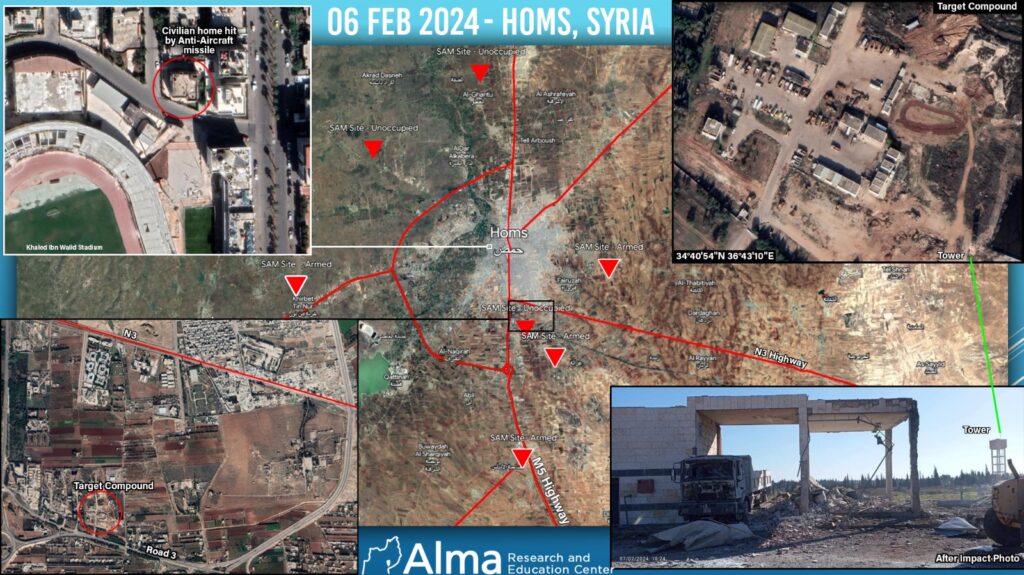

(February 9) – At noon, Syrian defense systems were activated in the Damascus area. According to initial reports, it was an airstrike against the Almaza airbase and against a target in central Damascus. About an hour later, an official Syrian announcement was issued stating that two UAVs coming from the direction of the Golan Heights were intercepted. At this stage, we do not know how to characterize this event. Based on past experience, the results of airstrikes in Damascus are usually filmed, with an emphasis on airstrikes in broad daylight. As of this writing, we have not located any such images of an attack.
(February 10) – In the early hours of the morning, an airstrike was carried out against a building located in a neighborhood of villas in the northern part of the town of Kara al-Assad, west of Damascus. (other reports indicated that it was an attack on several buildings). The nature of the building may indicate that a senior official lived there, or alternatively, it may have served as a meeting place or headquarters. According to local reports, the site is linked to Iranian activity and that there were three fatalities in the attack. Their identities are unknown at this time. The Damascus area is an anchor in Iran’s entrenchment in Syria, and it seems that the Iranian “advisors” are especially fond with villas with a swimming pool…
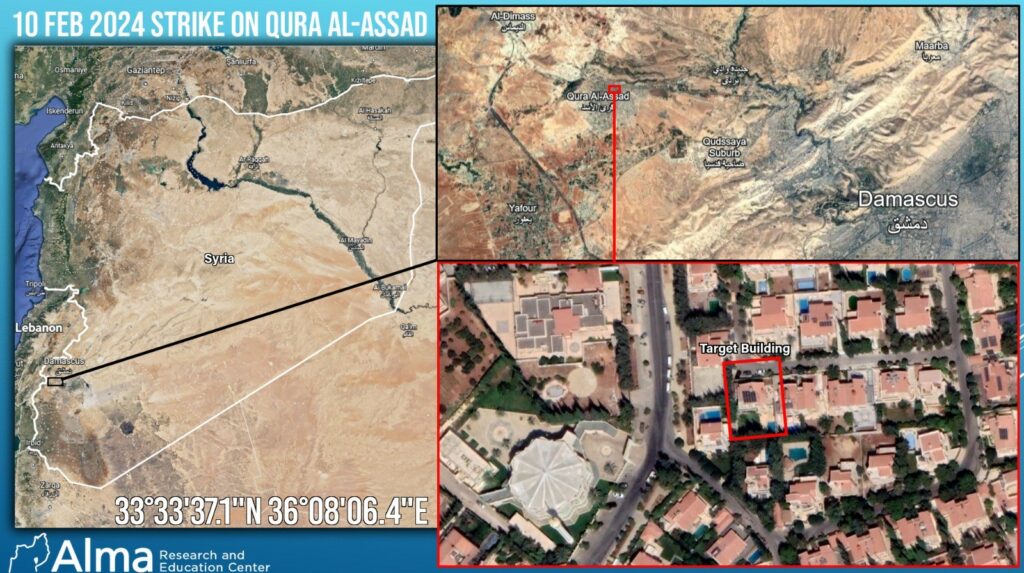
Syria – General:
(February 06) President Assad approved an order that increased public sector pay by 50%. This comes at the same time as bread costs have doubled.
(February 7) Activity on the drug highway on the Syrian-Jordanian border continues all the time. The Jordanian army reported another anti-smuggling operation in which three drug smugglers were killed. The Jordanian army has boosted the intensity of its anti-drug operations, including additional airstrikes within Syrian territory as well as ground raids.
(February 7) The Deraa province in southern Syria continues to be an unsafe area for the Syrian security forces: four Syrian soldiers were killed in a shooting ambush on their vehicle on the Deraa-Damascus highway near the town of Umm al Mayadin.
(February 8) Russia intends to establish a training center in Damascus for firefighters and search and rescue workers. Several Syrian trainees are already in Russia for training. There appears to be an upward trend in Russian military and civilian involvement in Syria, after it has declined in light of the war in Ukraine.
(February 11) After visiting Lebanon, the Iranian foreign minister arrived in Damascus and met with President Assad and Foreign Minister Mekdad. He expressed his support for Syria in standing up to “Zionist aggression” and sent an official invitation from the Iranian president to Assad to visit Tehran.
Shiite Axis – General:
(February 7) A senior member of the Kata’ib Hezbollah militia, Wassam Muhammad Saber (“Abu Bakr”) al-Saadi, was killed in an airstrike on his car in Baghdad. The militia was responsible for attacking the American base in Jordan (Tower 22) and killing three American soldiers. Abu Bakr was in charge of the militia’s military activity in Syria and was apparently directly responsible for the attack on the Tower 22 base. By virtue of his position, it can be understood that he was in close contact with the Quds Force and with Lebanese Hezbollah.
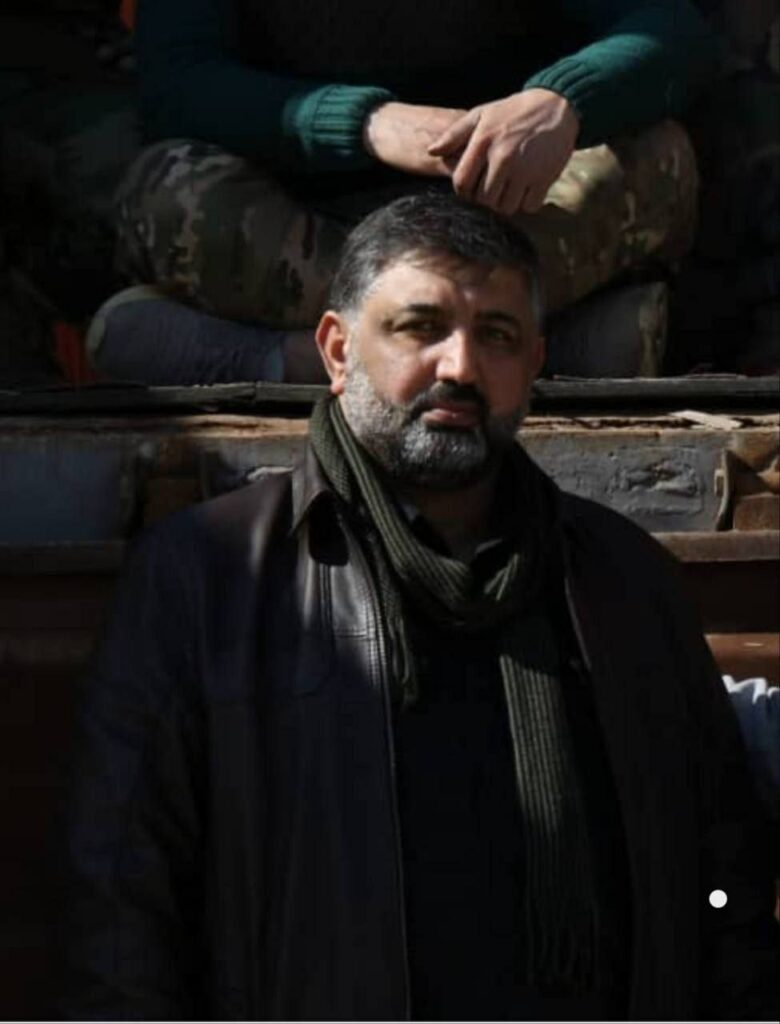
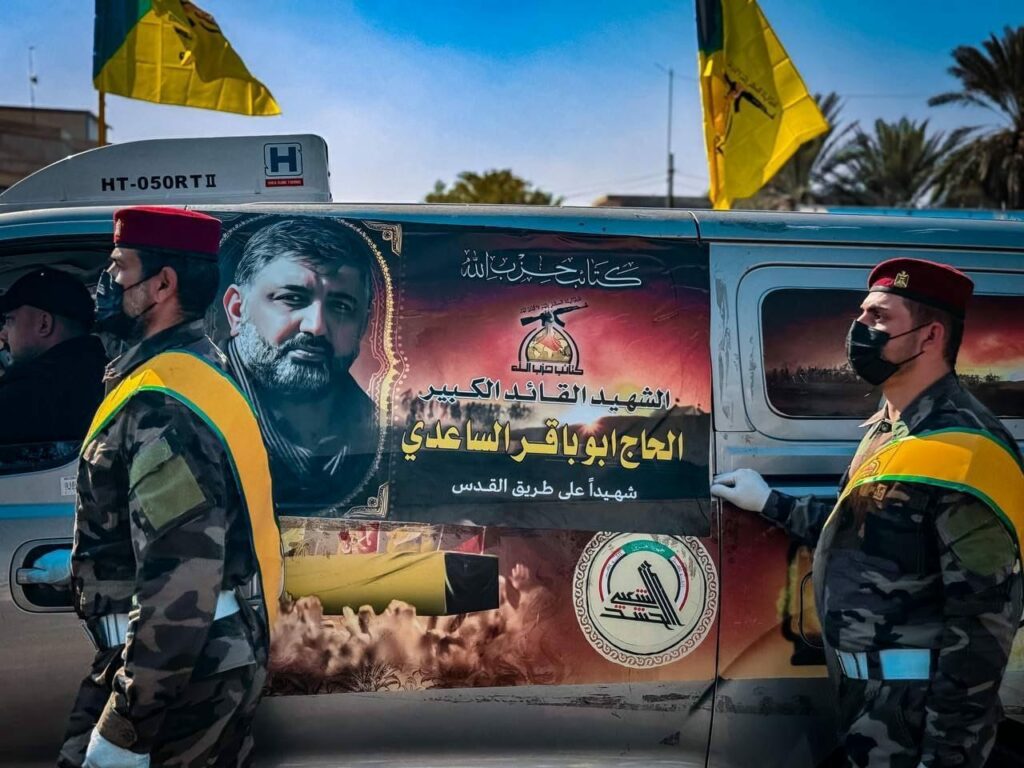
During the past week, the Shiite militias continued their rocket and UAV attacks against the American bases in Al-Omar and Koniko in Syria. A total of 6 airstrikes were carried out.
Houthi-Land:
During the past week, coalition forces managed to strike 10 explosive boats and 14 missiles launched or intended to be launched by the Houthis against ships in the Red Sea/Bab el-Mandeb.
(February 06) From 03:20 in the morning until 1630 in the afternoon, two ships in the Red Sea were under missile attack attempts: the American STAR NASIA, a Greek ship flying the Marshall Islands flag and the British ship MORNING TIDE. According to CENTCOM, the Houthis fired a total of 6 ballistic missiles at the ships. The first missile exploded near the STAR NASIA, causing minor damage but no casualties.

